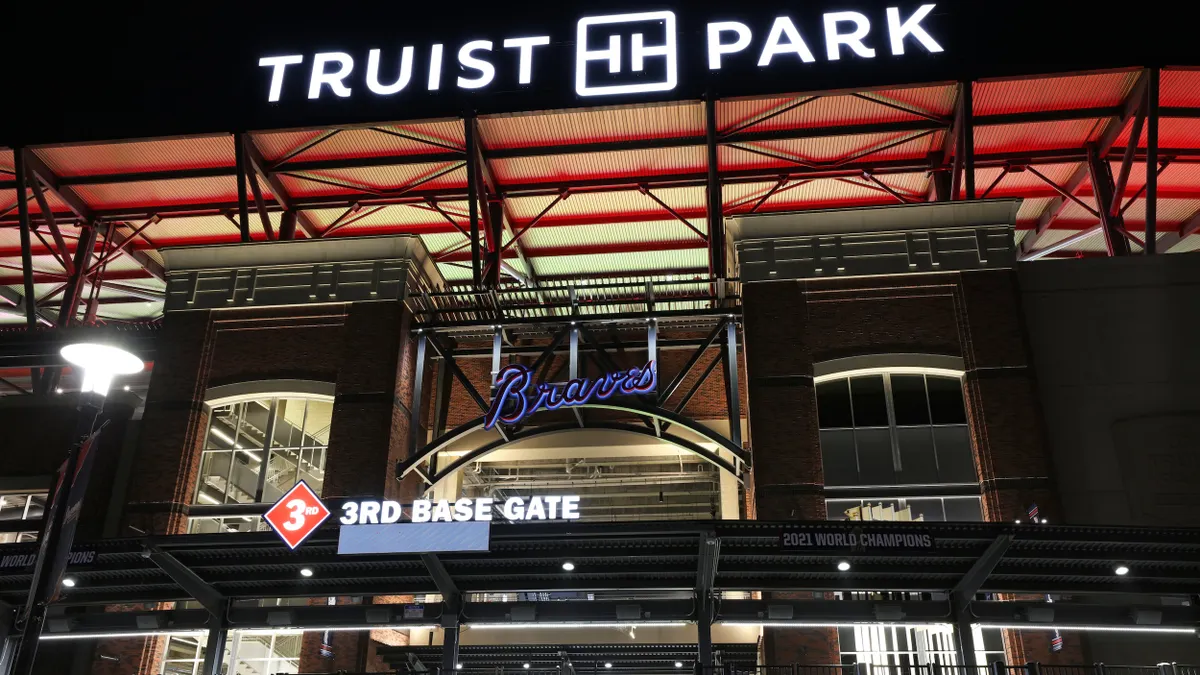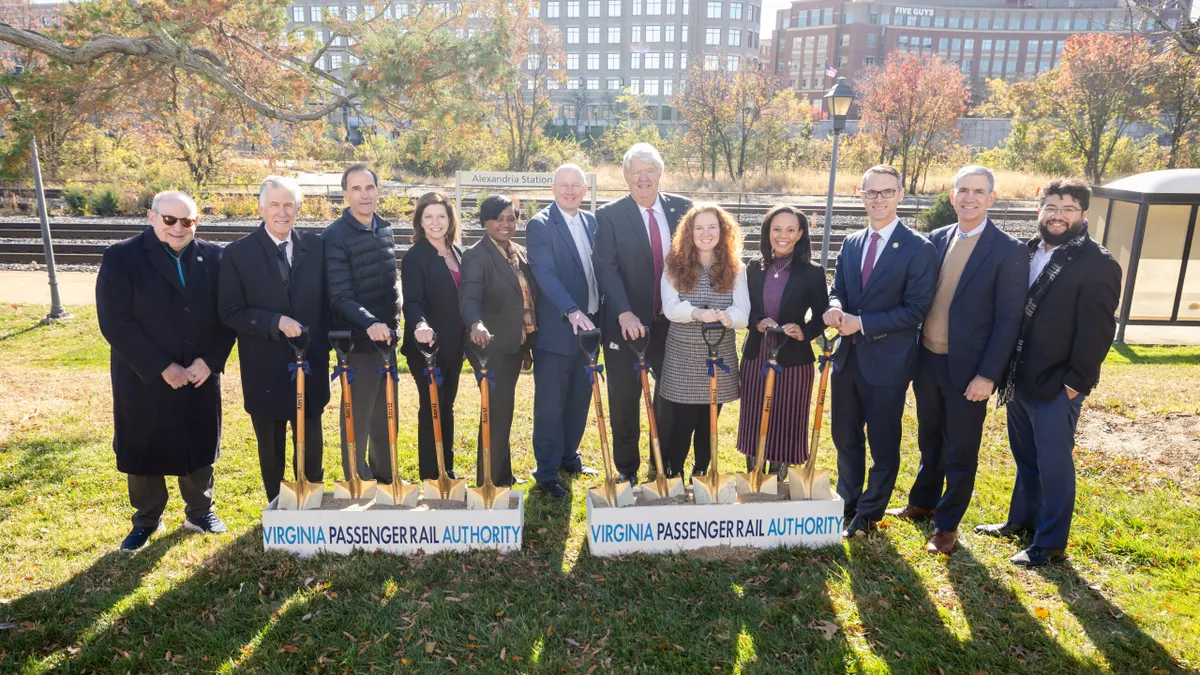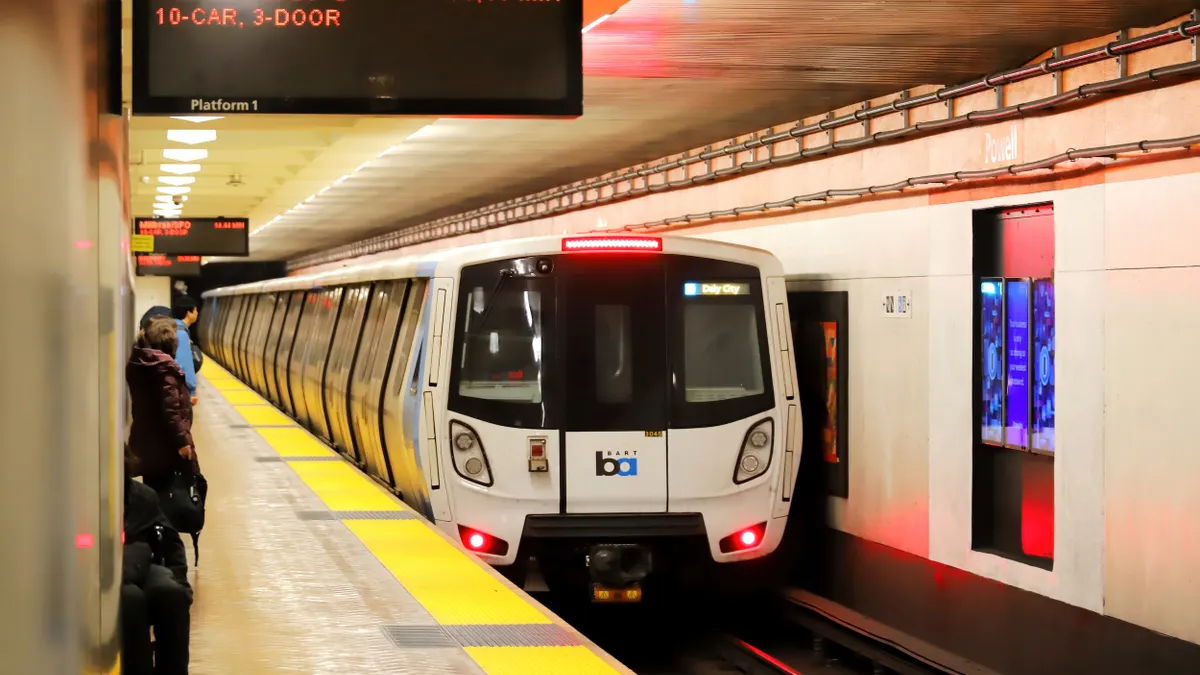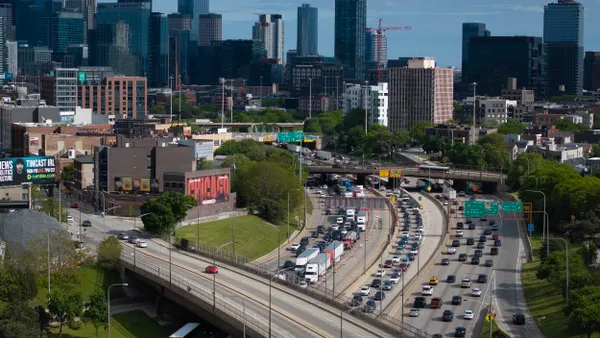A federal report on climate change this week painted an alarming picture of the future of the planet, but at the local level, city leaders are embracing their role as leaders on the environment and looking for ways to do more.
Scientists from 13 different agencies wrote the Fourth National Climate Assessment, and the authors warned, while climate effects differ by location, "all regions will be affected by climate change."
President Donald Trump told reporters, "I don’t believe it" when asked for his response to the report’s findings, and insisted the country is the "cleanest we’ve ever been." Trump has also recently questioned the existence of global warming given cold temperatures over Thanksgiving.
Given those comments and complementing actions such as Trump's withdrawal of the United States from the Paris Climate Accord, former New York City Mayor Michael Bloomberg has said repeatedly that the federal government is "asleep at the wheel," so the onus is on cities to fight the effects of climate change, including extreme weather and the impacts on transportation and infrastructure.
"There are cities and states stepping up and doing the job," Los Angeles Mayor Eric Garcetti said during a speech this month at the LA CoMotion Leadership Conference. "[We] don't need the White House, we just need this house."
“[We] don't need the White House, we just need this house.”

Eric Garcetti
Mayor, City of Los Angeles
Extreme weather threats rise
One of the most troubling findings in the report is the likelihood of increased extreme weather events including hurricanes, wildfires and rising temperatures.
"More frequent and intense extreme weather and climate-related events, as well as changes in average climate conditions, are expected to continue to damage infrastructure, ecosystems, and social systems that provide essential benefits to communities," the report’s authors wrote.
Cities have already been affected by such events with increasing regularity in the past few years, with experts previously saying the spate of wildfires that have dogged California are the "new normal." Meanwhile, cities like Houston have been battered by hurricanes and have spent over a year recovering and rebuilding, with the report calling the 2017 series of Hurricanes Harvey, Irma, Jose and Maria "unprecedented" in their scale and intensity.
The report warns the warming oceans caused by greenhouse gas emissions, and the overall temperature rise that could be as high as 9 degrees Fahrenheit by the end of the century without significant action, will spur more extreme weather events.
That could mean more hurricanes making landfall in cities, more flooding and also periods of drought, as well as wildfires continuing their ferocious paths. Some fires this year came close to major populated areas in California while wiping some residential areas off the map completely.
"We have to remember, it's a sober wake-up call that climate change is happening now," Garcetti said. "To the last flat-earthers that exist, I would say: tell that to somebody sweating on the fire line who is a firefighter right now that this isn't real. This drought, as Gov. [Jerry] Brown said, is our 'new abnormal.'”
The trend of more extreme weather has advocates worried for the future, and it has many similarities to the findings of the United Nations' Intergovernmental Panel on Climate Change (UN IPCC), which said in a report that humans have 12 years to act on climate change, or else be faced with dire consequences.
“The impacts of the Climate Crisis are being felt in all regions across our country — extreme weather, heat waves, deeper and longer droughts, crop failures, strengthening wildfires, sea level rise — and they are disproportionately borne by the most vulnerable among us,” former Vice President Al Gore, a leading voice in the fight against climate change, said in a statement.
Cities like Orlando, FL are on the front lines in dealing with such extreme weather events, especially as rains become more intense and bring an increase in inland flooding brought on by warmer waters in the Gulf of Mexico and Atlantic Ocean. Meanwhile, the number of 90-degree days is on the rise.
But Orlando also has been forced to deal with what local leaders term climate migration, or climate refugees, where people escape from coastal areas that have been hit by major storms. During Hurricanes Irma and Maria, the city had an influx of more than 300,000 people escaping from the coast and the Caribbean, forcing leaders to also consider the impacts on housing affordability, education and jobs if they stay permanently.
"How are we going to house these individuals with affordable housing, how are we going to put those kids into schools, how are we going to give those families jobs and economic development opportunities?” Chris Castro, Orlando’s director of sustainability and resilience, told Smart Cities Dive. 'These are the types of challenges that are unintended that will certainly come as a result of climate change and the threats that are presented."
Transportation
Another area of concern in the federal report is the impact of climate change on transportation, which it says “undermines the system’s ability to perform reliably, safely, and efficiently." By 2090, damages to paved roads alone are estimated to cost an annual $20 billion in a high climate impact scenario.
While warmer temperatures may extend the construction season in some regions, "[w]arming winters will also change the timing and location of freeze and thaw events, potentially increasing pavement cracking and pothole conditions," scientists warn.
Extreme weather events will also increasingly threaten critical roadways.
"Inland flooding, projected to increase over the coming century, threatens approximately 2,500 to 4,600 bridges across the United States and is anticipated to result in average annual damages of $1.2 to $1.4 billion each year by 2050," scientists wrote.
The report notes the changing nature of transportation, as areas such as ride-hailing, autonomous vehicles (AVs), electric vehicles (EVs) and transit-oriented development are all emerging and shifting people away from car reliance. But it says their impacts on climate are “still largely uncertain.”
“Similarly unclear is the impact that new transportation patterns, combined with deteriorating infrastructure, population growth, and land-use change, will have on the system’s ability to adapt to climate change,” the report continues.
Experts pointed to the growth in EV usage as one area for real positivity, especially as EVs are becoming more popular in many cities nationwide. Antha Williams, program leader of Bloomberg Philanthropies’ Environment arm pointed to the Climate Mayors Electric Vehicle (EV) Purchasing Collaborative, led by a group of elected leaders who have pledged to uphold the goals of the Paris agreement.
Garcetti is one of the leaders of that initiative, and Williams said it could help solve many problems in a congested and polluted city.
"[He’s] working in a really ambitious way to accelerate EV adoption and at the same time work with other partners to expand the EV charging infrastructure to think about things like the gas stations of the future that can enable that, and to take what's been this soul-crushing traffic problem in LA and turn it into a place where they're going to grow and pave the way for a much different future," Williams told Smart Cities Dive. "That's good for residents of the city but also combats climate change at the exact same time."
For his part, Garcetti said that working on transportation and climate change go together. “We must all do things,” he said at LA CoMotion. "If we intend to invest in our transportation infrastructure, combating climate change while we do it has to be at the top of that list."
“We realize that in order for us to address this and mitigate the problem, we need to transition and de-carbonize the electricity mix to be 100% renewable electricity.”

Chris Castro
Director of sustainability and resilience, City of Orlando, FL
Building a renewable future
The fight against climate change at the city level also comes in building codes and standards, an area over which urban leaders maintain almost total autonomy. Castro said that a study in Orlando found that the city’s buildings are responsible for 80% of its greenhouse gas footprint, primarily as the electricity it consumes is from fossil fuels like coal and some natural gas.
The city committed to use entirely zero emission electricity by 2050, with all city operations going de-carbonized by 2030, and has benchmarking tools in place where buildings’ energy use is reported each year.
“We realize that in order for us to address this and mitigate the problem, we need to transition and de-carbonize the electricity mix to be 100% renewable electricity,” Castro said. “[It's] been proven that energy efficiency in buildings is the greatest and most cost-effective way to lower carbon dioxide and pollution from the power plants.”
Other city leaders are taking drastic action to move away from fossil fuels. In January, New York City announced it would divest its pension funds from fossil fuel reserve owners within five years.
In a speech earlier this year at the Global Climate Action Summit in San Francisco, New York City Mayor Bill de Blasio estimated if the top 50 pension funds in the United States invested 2% in climate solutions, that could convert half of all homes to solar power. If every fund did it, he said that would generate $200 billion annually, "a major step on the road to the $1 trillion we need to keep climate change at bay each year."
And the ambitious goals of Paris seem to be making an impact at the city level. Garcetti said that Los Angeles has seen an 11% reduction in carbon emissions in one year, part of a trend that has found the United States is almost halfway toward achieving the goals of the climate accord. The findings of that report, entitled "Fulfilling America’s Pledge: by the America’s Pledge initiative," have been disputed by the likes of the Rhodium Group.
Despite differing views on how much progress is being made, the report says areas like air quality and public health are under threat from pollution caused by carbon emissions, and environmental advocates say that is a call to action for cities to change their ways.
"To avoid the worst effects of the climate crisis, we must move beyond dirty fuels to an economy powered by 100% clean, renewable energy now,” Sierra Club Global Climate Policy Director John Coequyt said in a statement. "No amount of tryptophan-induced sleep can keep us from acting."
'A very unfortunate blip'
Despite the pessimism about the federal government’s apparent abdication of responsibility and leadership on fighting climate change, city leaders say they remain optimistic that the United States can move towards a greener future.
Bloomberg Philanthropies has already given cash prizes to cities that look to fight climate change in innovative ways through the American Cities Climate Challenge, and is releasing a movie entitled "Paris to Pittsburgh" on Dec. 12 that highlights ongoing efforts at the local level.
Williams said that spirit of cooperation will continue and have a positive legacy compared to the conversations at the national level of government.
"For the future, for all sorts of self-interested reasons, people are really pulling in the right direction on combating climate change," she said. "I just believe that what we're seeing from the federal government will be a very unfortunate blip in an otherwise promising trajectory."
And for cities, leaders said it also represents an opportunity to re-make their economies by moving away from fossil fuels and attract businesses involved in areas including solar and EV charging.
Castro said Orlando has already seen a doubling of the amount of rooftop solar companies in the last two years, and the job market in renewable energy not only attracts businesses but also workforce development, as people are trained in new skills and earn higher wages.
That workforce and business development, combined with new jobs that help save the environment, create major wins for cities like Orlando, Castro said.
"In addition to us trying to solve the global climate crisis, we see cities being able to create new sustainable economies, ones that enhance qualities of life, create new job opportunities and at the same time protect the planet," Castro said. "It's a triple bottom line approach: people, planet and prosperity, and we can make it happen and there's opportunities on the table."
While there may be some progress on the national level after Democratic gains in the U.S. House of Representatives, such as Rep.-elect Alexandria Ocasio-Cortez’s proposed Green New Deal that would create a special committee and set aspirational goals, city leaders remain optimistic that they can keep up the leadership mantle.
"I'm really optimistic," Williams added. "Every day, we see people at all levels making decisions that help create a healthier planet, because it's in their interests to do so."


















